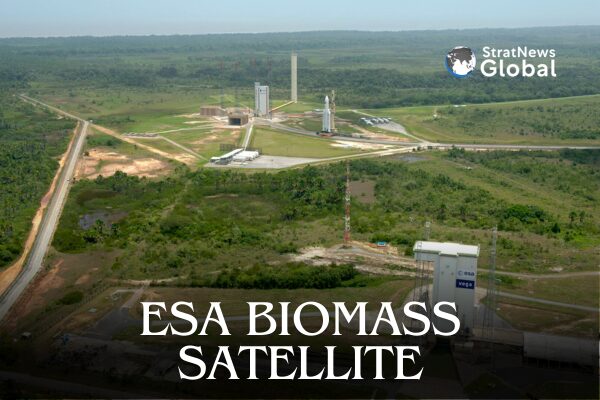New Satellite to Measure Forest Carbon from Space
The European Space Agency (ESA) successfully launched its Biomass satellite on Tuesday, 29 April, from Europe’s Spaceport in Kourou, French Guiana. The satellite was carried into orbit aboard a Vega-C rocket, marking a key step in ESA’s mission to monitor Earth’s forests and carbon storage.
In the coming days, engineers will perform checks to ensure all systems are functioning correctly. Once verified, the satellite will begin collecting data using advanced interferometry technology.
The mission aims to enhance our understanding of the carbon cycle and track the impacts of deforestation and climate change on forest carbon levels.
Five-Year Mission to Map Carbon in Rainforests
Over the next five years, the Biomass satellite will orbit Earth, scanning some of the world’s densest forests. It will focus on tropical regions in Africa, Asia, and South America.
The satellite is equipped with a P-band synthetic aperture radar. This unique radar system can penetrate thick forest canopies to measure woody biomass—such as tree trunks, branches, and stems. These measurements serve as indicators of how much carbon is stored in forests.
Forests play a crucial role in absorbing around 8 billion tonnes of carbon dioxide from the atmosphere each year. However, ongoing deforestation and land degradation are causing much of this carbon to be released back into the air.
Unlocking Secrets Beneath Ice and Sand
According to Biomass mission manager Klaus Scipal, the satellite’s radar will do more than measure forests. It can also penetrate several metres of ice, offering valuable insights into Antarctica’s ice layers. Additionally, it may detect buried features beneath sand, helping researchers understand Earth’s climate history.
“There are many things we already expect to measure,” Scipal told Reuters TV. “But what’s really exciting is discovering the unknown—things we can only learn once the data starts coming in.”
ESA’s Earth Explorer missions, like Biomass, are designed not only to answer scientific questions but also to reveal new ones, pushing the boundaries of Earth observation.
with inputs from Reuters


